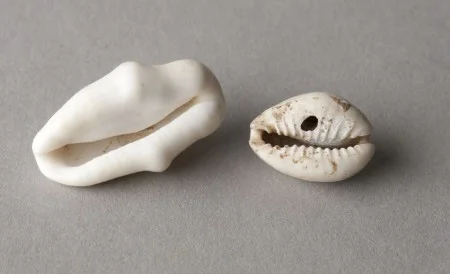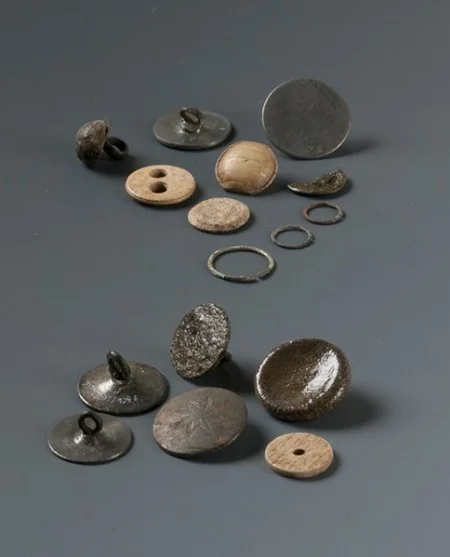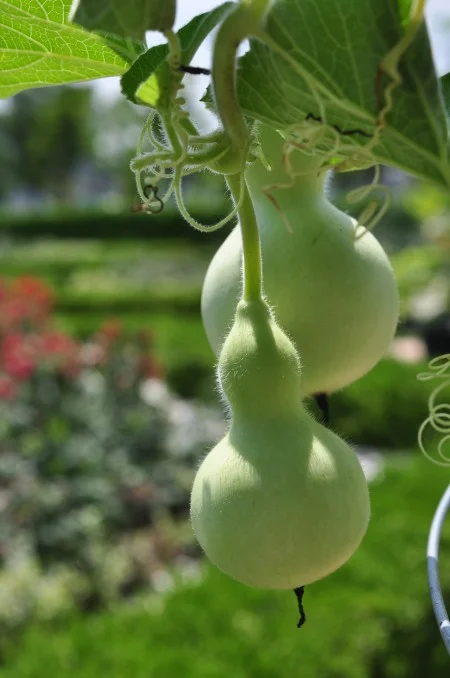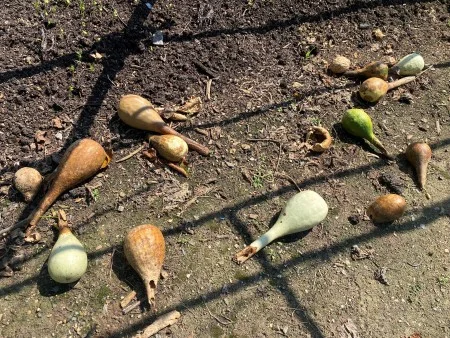Searching for the musical traditions of Mount Vernon's enslaved community
By Jason Boroughs
The composition of America’s musical DNA lies in its melting pot heritage. It is a rich tapestry of contributions from the peoples and cultures that comingled throughout the colonies during the colonial era. Jazz, gospel, blues, country, rock and roll, hip hop—each of the major genres of American popular music of the past century was built upon a musical foundation rooted in these historical interactions. Plantations such as Mount Vernon take on heightened significance as sites of cultural exchange that ultimately led to the innovation of new traditions, new foodways and cuisines, and new distinctly American forms of music, all forged in a power dynamic shaped by enslavement.

The soundscape of Mount Vernon in the 18th century was a vibrant blend of transatlantic components, of European melodies and African polyrhythms, from formally composed tunes reproduced skillfully on a superbly made harpsichord to the informal twang of the jaw harp or spontaneous resonance of the fiddle, to the complex percussion and melodic accompaniment of a host of handmade African instruments, and of voices singing harmoniously in diverse styles and languages.
By the twilight of his life in 1799, George Washington had successfully developed Mount Vernon from a modest plantation into an 8,000-acre agricultural and commercial enterprise that comprised five farms, a gristmill and distillery complex, and a profitable fishery along the Potomac riverfront, worked by a community of 317 enslaved persons. Music was an integral component of daily life for the entire plantation community. Three principal groups of music makers, each associated with unique sites of musical production, resided upon the Mount Vernon estate, including the Washington family, hired white workers and their families, and the enslaved community.
Musical performance in the Washington household was centered within the Mansion. In 1781, Martha Washington’s grandchildren Eleanor (Nelly) and George Washington Parke Custis were invited to live at Mount Vernon and received formal education under various hired tutors. Under the watchful eye of her grandmother, Nelly proved to be particularly adept at musical instruction and was soon gifted several instruments by her step-grandfather, including an elaborately embellished harpsichord. In June of 1798, a visiting Polish nobleman wrote of Nelly, “Her sweetness is equal to her beauty, and this being, so perfect of form, possesses all the talents: she plays the harpsichord, sings, draws better than any woman in America or even in Europe.”

Musical Influences
Mount Vernon underwent several campaigns of expansion during Washington’s tenure, necessitating a host of hired and indentured craftsmen and artisans, many of whom were recent immigrants from Ireland and England who lived in residence on the estate. Fragments of two composite metal jaw harps were recovered by Mount Vernon archaeologists in areas associated with skilled laborers—the blacksmith shop north of the Mansion and in the work yards along the lane south of the Mansion. Cheap, portable, and readily available, jaw harps attained a wide following throughout the colonial era. Hired artisans often worked in tandem with skilled enslaved craftsmen, and both groups made frequent use of these respective work spaces. The sprightly twang of the jaw harp could have enlivened an impromptu tune that conjured memories of a home left behind or may have provided an informal rhythmic accompaniment from which to mark the passage of the day’s labors.
Although enslaved persons were formally disenfranchised of civil rights of marriage under Virginia law, marriages were nevertheless recognized by both the enslaved community and by George Washington, who wrote of marriage in 1785 as “the most interesting event in one’s life, the foundation of happiness or misery.” By 1799, two-thirds of enslaved adults at Mount Vernon were married. Although Washington not only recognized but seemed to have genuinely respected marriage and family relationships among his enslaved laborers, residence patterns were still determined by work assignment. Enslaved adults were housed on the farm where they worked regardless of where a spouse resided. Roughly one-third of married adults at Mount Vernon cohabitated under a common roof. The remaining two-thirds formed divided residence families, with spouses living in different quarters on another of Mount Vernon’s farms or off-plantation. Children remained in the mother’s quarter of residence. It was common for enslaved persons to visit spouses, family, and friends in other quarters in the nighttime hours, on Sundays (the weekly day off), and holidays such as Christmas and Easter. Washington observed, “It is no uncommon thing for them to be running from one house to another in cold windy nights with sparks of fire flying and dropping as they go along.” For the plantation’s enslaved residents, music would have accompanied the daily rhythms of seasonal labors and agricultural tasks. But perhaps more importantly, music was an emotional outlet and a means of sustenance. A fundamental comfort that permeated family and community gatherings large and small, it provided a connection with ancestors and kin that reverberated throughout domestic quarters on each of Mount Vernon’s five farms and across the broad Atlantic. In essence, music was community.
Compilation of Enslaved Worker Songs
Enslaved persons in North America passed down stories, lessons, and warnings through song. Listen to this sample of the type of songs that might've been sung at Mount Vernon.
Depictions
There are few surviving depictions of enslaved lives on 18th-century plantations. Among the best known is a small, roughly 12- x 18-inch watercolor painted circa 1785–1790. Attributed to John Rose, The Old Plantation depicts a gathering of enslaved men and women on a large plantation—believed to be the artist’s along the Coosaw River between Charleston, South Carolina, and Savannah, Georgia. The painting is quite extraordinary for the time in that the subject is a group of enslaved persons exclusively, engaged solely with each other. In the common space between two single-story frame dwellings, presumably a domestic quarter, a central figure performs an elaborate dance with musical accompaniment while onlookers participate and socialize. At first glance, it is immediately apparent that two men seated on a bench are playing musical instruments; scholars have noted, however, that the two women who appear to be engaging the primary dancer with a dance of their own are also simultaneously playing a unique type of percussive instrument.

One of the seated men plays a stringed instrument that will no doubt seem familiar to many, as it is the 18th-century ancestor of one of the most popular instruments in American music of the 19th and early 20th centuries—the banjo. We’ll return to the banjo in a moment. The man seated next to the banjo player beats a percussive rhythm on an unknown instrument. Although we know from surviving eyewitness (or earwitness) accounts that a variety of drums were handmade in enslaved communities across American plantations, the instrument depicted in the painting doesn’t appear to be a traditional stretched-skin drum. One scholar has suggested it may be a ceramic vessel or bottle, but it is more likely a large calabash, or bottle gourd, turned on end. We’ll return to the calabash in a moment as well. Poised on the tips of their toes in a posture that mimics the bodily motion of the primary dancer, the two women hold what appear to be scarves or netting while engaging in rhythmic banter with the central figure. The objects have been identified as examples of an African instrument known as a shegureh. Among the Mende peoples of Sierra Leone and Liberia, the shegureh is a percussion instrument constructed of a prepared calabash, or bottle gourd, affixed with cowrie or other marine shells, glass beads, or buttons that may be held in hand or enclosed in netting or cloth and agitated to produce a rhythmic percussive sound. In West Africa, the instruments are played exclusively by women as part of elaborate community dance performances.
Cowrie shells, used historically in the construction of musical instruments, have been recovered by Mount Vernon's Archaeological team. These shells were discovered in the South Grove midden. (MVLA)

Stringed instruments, or more specifically, varieties of plucked lutes such as the one depicted in the painting, are historically common across much of West Africa. Yet the banjo represented in The Old Plantation and others described in historical accounts, while of a fundamentally African design, do not appear to be direct replicas of any known African instrument from the period. Rather, it and others produced in North America (alternatively known as banjo/banjer/banjar/bandore) are likely New World hybrids that incorporated African and European structural elements. For example, the bodies of early banjos on Southern plantations (and in the Caribbean), like their African counterparts, were constructed of a large calabash, or bottle gourd, cut and covered with a taut animal hide to produce a soundboard and resonance chamber. West African plucked lutes typically have cylindrical fretless necks with sliding tuning rings, whereas the banjo in the painting exhibits a carved wooden neck with tuning pegs and a flat fingerboard reminiscent of European plucked string instruments. All this is to say that the banjo is a unique New World creation, born of the plantation melting pot of remembered and innovated traditions and influences from a variety of homelands. However the New World banjo came to be, by the mid-18th century, it had become a quintessential musical instrument within North American plantation communities.
Would the instruments depicted in The Old Plantation have been played by musicians in Mount Vernon’s enslaved community? And would the scene in the painting have been familiar to those on Washington’s plantation estate? The answer to both questions is almost certainly yes. The largest contingent of enslaved people at Mount Vernon following the marriage of George and Martha Washington in 1759 had come to the estate along with Martha, who had inherited a life interest in a share of her late husband Daniel Parke Custis’s estate, including a large cohort of enslaved persons. The cosmopolitan assemblage of people that made up the Custis dower, as it came to be known, had lived on a number of Custis plantations throughout Tidewater counties on both sides of the Chesapeake Bay and in Williamsburg before traveling to Mount Vernon. Many were African-born, and all had come to be familiar with a variety of plantation settings in Virginia. Some may have remembered the distinct sounds, rhythms, and sense of community fostered by music and dance in respective African homelands, but all were almost certainly familiar with these traditions in the New World.
Let the calabash
Entwined with beads
With blue Aggrey beads
Resound
Let the calabash resound
In tune with the drums.
Voices of women
And the bass
Of men.
Hear:
Our native songs
- Frank Kobina Parkes, “African Heaven,” 1959 (excerpt)
Evidence of Music
“Finding” music in Mount Vernon’s enslaved community is a formidable challenge, yet we do find subtle clues in surviving historical accounts and through archaeology. In 1985, archaeologists discovered a wooden tuning peg and a carved wooden bridge from a stringed instrument presumed to be a banjo while excavating a well on an 18th-century plantation site just across the Potomac from Mount Vernon in southern Maryland. Wooden objects do not typically withstand the onslaught of continued exposure to the elements. But if organic items are submerged in an anaerobic, or oxygen-free, environment hostile to the development of microorganisms responsible for the decay of such objects, in a well for instance, they may be preserved for centuries. And therein lies the problem for archaeologists. Sealed anaerobic depositional contexts tend to be pretty rare on archaeological sites. Yet many objects historically documented in the construction of musical instruments have been archaeologically recovered at Mount Vernon. Cowrie shells, glass beads, and buttons made from a variety of materials have been recovered from multiple locations at Mount Vernon, including the South Grove midden, the African American cemetery, and the House for Families cellar, one of the primary quartering sites for enslaved people on the Mansion Farm for decades. Each of these seemingly commonplace items is identified most often as an object of bodily adornment, but each could also have adorned a shegureh, rattle, or tambourine that provided rhythmic accompaniment to a family or community gathering. Incidentally, cowrie shells, not uncommon finds from 18th-century plantation contexts in the Chesapeake Bay region, are shells of sea snails that thrive in tropical waters off the coastlines of the African continent and in the Caribbean, suggesting that the cowries likely traveled along the transatlantic passage with newly arrived Africans.
Seeds of Lagenaria siceraria, the calabash or bottle gourd, have been recovered from the House for Families cellar as well. The bottle gourd was originally domesticated on the African continent as early as 5,000 years ago and was likely introduced to Virginia plantations along with the peoples who understood its cultivation and usage. Historical accounts of vines bearing the thick-bodied gourds and descriptions of their preparation and usage as vessels for food storage and consumption abound in plantation contexts, so it is no surprise to find evidence of their existence at Mount Vernon. However, the gourds also provided raw material for the production of musical instruments such as the banjo and shegureh, and others as well.
Several African instruments that appear in historical observations on 18th-century Virginia plantations seem to have been phased out or replaced by others as successive generations of African American musicians continued to adapt, develop, and incorporate new musical styles and instruments (such as the fiddle) heading into the turn of the 19th century. Among these is the quaqua, a type of percussive sounding board played in the manner of a drum (basically a non-hollow drum), and the barafoo (barrafou/balafo/balafon), an intriguing percussive-melodic instrument still popular in Mali, best described as a wooden xylophone with calabash gourd resonators affixed beneath the wooden striking keys. In an unofficial satire of King George III penned in 1774, the influential planter, outspoken colonial official, and prolific diarist Landon Carter, of Sabine Hall on Virginia’s Northern Neck, reveals his familiarity with the “Quaqua, Barafoo, [and] Banjers” and suggests the prominence of the triad of instruments across his plantation holdings and likely throughout the region. Short of an extraordinary find such as the banjo bridge and tuning peg in Maryland, virtually all that might be recovered archaeologically of these musical instruments—metal tacks or nails used to stretch a hide across the body of a banjo or the seeds of the calabash used to produce the resonance chamber of a barafoo or banjo—could easily be misidentified as common items used in other contexts. These types of historical accounts help provide relevant clues to aid in identification and analysis of archaeologically recovered objects that could have been used in music-making.
Seeds of Lagenaria siceraria, the calabash or bottle gourd, have been recovered from the House for Families cellar. Gourds served many functions, including as raw material for the production of musical instruments such as the banjo and shegureh, and others as well. (MVLA)
The quaqua and barafoo appear to have waned in popularity in conjunction with the rise in prominence of an introduced European instrument—the fiddle. Historical references to both decline following the Revolutionary era. The fiddle was integrated with the banjo, which remained popular and gained broader following among whites in the early decades of the 19th century. When played by black musicians, the fiddle, as a familiar instrument, was viewed as more approachable, less exotic, and even desirable by white audiences, as a 1769 ad placed in the Virginia Gazette seeking the purchase or hire of an enslaved man “who can play well on the violin” attests. Black fiddle players learned new songs and often switched styles depending on the audience. Across plantation quarters, the down stroke technique of plucking the banjo meshed well with what art historian Robert Farris Thompson has described as a “percussive concept of performance” mastered by African violin players, who “do not traditionally bow fiddles legato, but pluck them energetically, with vigorous attack.” Complex polyrhythms and multiple meter are hallmarks of African musical influence, along with attention to “in between” spaces in harmonic sequences—bending or accentuating notes a degree lower in pitch to create emotive blue notes for instance, a hallmark of traditional blues and a sound that would have been eminently producible on a fretless gourd banjo by a skilled player. Even without formal percussive accompaniment, “patting juba,” a percussive style of dance involving clapping, stomping feet, and patting arms, legs, and chest documented within Virginia plantation communities, could provide rhythmic grounding to melodic accompaniment by voice or by instrument.
Music and dance, then as now, serve to express the full range of human emotion and sentiment, conveying sorrow, pain, hope, and joy to spectators and binding communities together in common and exceptional ways. For Mount Vernon’s enslaved community, music likely meant many different things to many different people. It could have prompted memories of a home long departed or served as a familiar and comforting presence to lean upon in difficult times or an outlet of joy in others. Whatever the case may have been, the contributions of extraordinary African American musicians from plantation communities like Mount Vernon have fundamentally shaped and influenced the course of innovation in American musical tradition.
About the Author
Jason Boroughs, Ph.D., is Mount Vernon’s research archaeologist. He has more than 25 years of field experience excavating historical sites throughout the United States and the Caribbean, and his publications focus on plantation communities in the Chesapeake Bay region.







